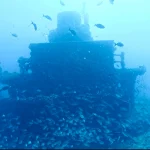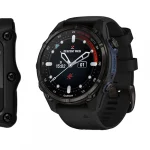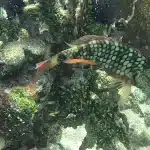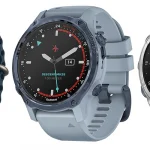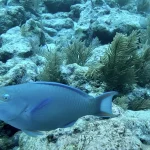Table of Contents
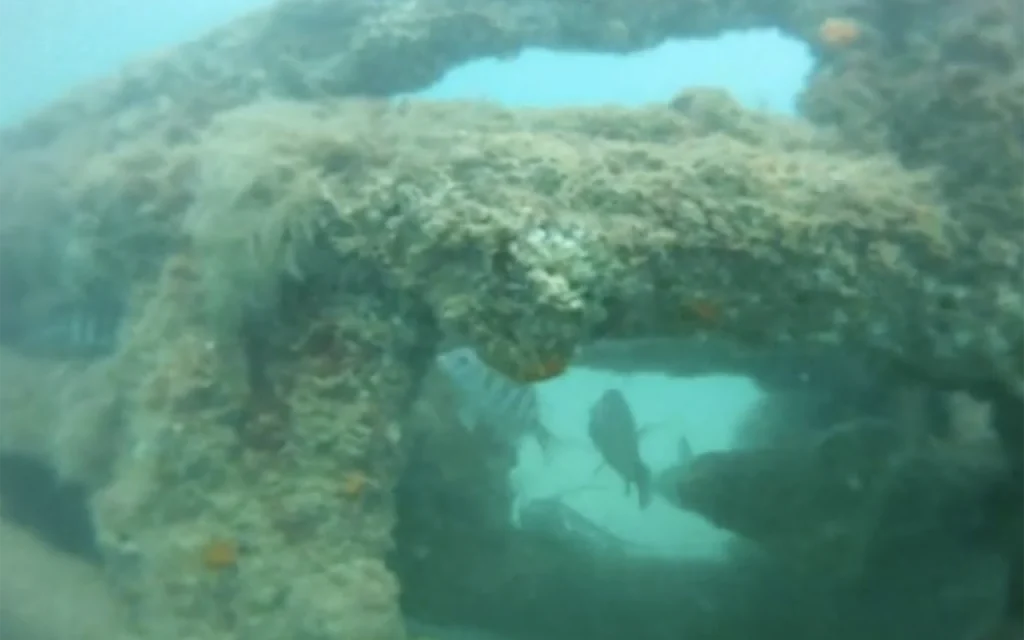
The shallow depth of 15 feet (4.6 meters) and the wreck’s structure provide an ideal environment for these marine species to thrive. The combination of the ship’s historical features and the marine life it now supports makes the USS Narcissus an interesting site for both history enthusiasts and marine biology observers.
Article at a Glance
- Rich History: Explore a Civil War-era tugboat that participated in the Battle of Mobile Bay, offering a unique glimpse into maritime history.
- Shallow Dive: At a depth of just 15 feet, the USS Narcissus is accessible to divers of all levels, allowing for extended exploration without the complexities of deep diving.
- Visible Features: Discover well-preserved elements like the steam engine, propeller, and portions of the wooden hull, providing insights into 19th-century shipbuilding.
- Thriving Marine Life: The wreck serves as an artificial reef, home to diverse marine species such as coral, cobia, and Goliath groupers, enhancing the underwater experience.
- Safety Protocols: Benefit from comprehensive safety measures, including guided dives, weather monitoring, and legal protections, ensuring a secure and respectful visit.
- Diving Access: Dive trips are available through organizations like The Florida Aquarium and Island Boat Adventures, offering equipment and expert guidance.
- Preservation Efforts: As an underwater archaeological preserve, the USS Narcissus is protected by law, maintaining its historical and ecological value for future divers.
Shipwreck Location Coordinates and Depth
Depth
The USS Narcissus rests in relatively shallow water, with a maximum depth of 15 feet (4.6 meters).
Location & Coordinates
The wreck site is located at latitude 27° 37.548′ N. (The longitude is not provided in the search results, but it would be in the Gulf of Mexico, west of Egmont Key.)
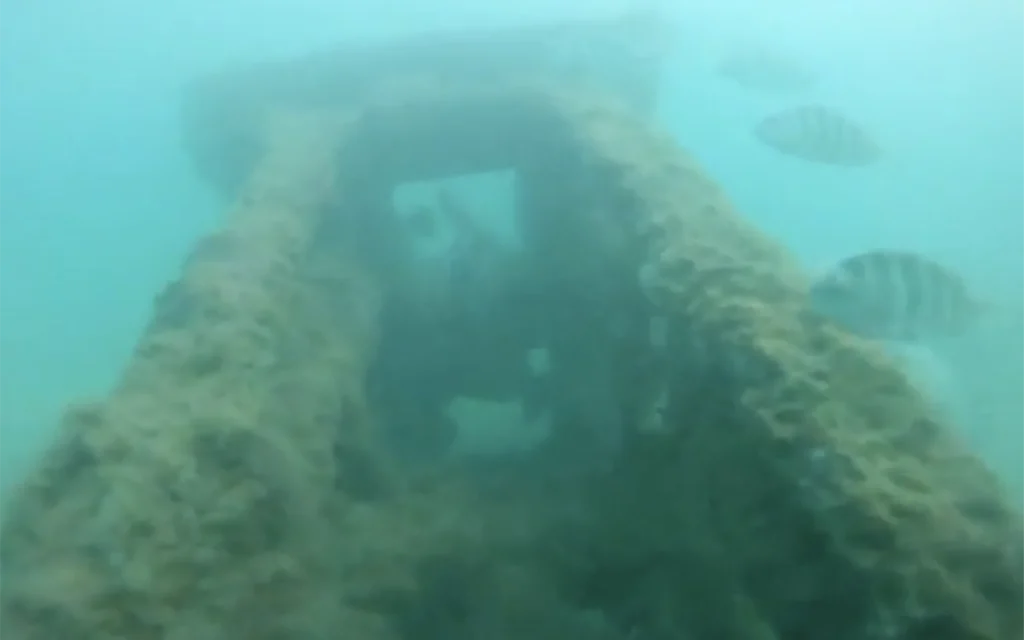
What Do Scuba Divers Say About This Ship
- Accessibility: The USS Narcissus is highly accessible to divers due to its shallow depth of only 15 feet (4.6 meters). This makes it an attractive site for both experienced divers and those who might be less comfortable in deeper waters.
- Historical significance: Divers appreciate the historical value of the USS Narcissus, a Civil War-era tugboat that participated in notable battles such as the Battle of Mobile Bay. The wreck’s status as a potential underwater archaeological preserve adds to its appeal for history enthusiasts.
- Marine life: The wreck has become a thriving artificial reef. Divers report that it’s covered in hard and soft coral and is home to various marine species, including cobia and resident Goliath groupers.
- Preserved features: Scuba divers are particularly impressed by the well-preserved features of the wreck. The steam engine, propeller, drive shaft, and portions of the wooden hull are still visible and have been subjects of interest for both recreational divers and researchers.
- Anticipation: Many divers are eagerly awaiting the official designation of the USS Narcissus as a state historic site, which will make it more accessible for diving.The placement of a bronze plaque at the wreck site is also anticipated.
- Dive conditions: The shallow depth and proximity to shore (about 2 miles off Egmont Key) make it a relatively easy dive site to access. However, divers should be aware that local dive charter boats are typically used to reach the site.
- Photographic opportunities: The wreck’s shallow depth and good visibility provide excellent conditions for underwater photography and mapping, which has been of interest to both recreational divers and researchers documenting the site.
What Kind of Marine Life Can Be Found on The Ship
- Coral: The wreck is covered in both hard and soft coral species, which have colonized the structure over time.
- Cobia: These fish are frequently observed around the wreck site.
- Goliath Groupers: The shipwreck serves as a home to resident Goliath groupers, which are known for their large size and tendency to inhabit artificial reefs.
- Diverse ecosystem: While not specifically named, the wreck site is described as a “refuge for marine life,” suggesting a rich and varied ecosystem has developed around the structure.
Key Information
| Feature | Description** |
|---|---|
| Location | Off the coast of Egmont Key, Florida. |
| Depth | Approximately 15 feet. |
| Historical Significance | Served in the Union Navy during the Civil War; sank in 1866. |
| Marine Life | Home to various species, including fish and coral. |
| Diving Conditions | Suitable for divers of all levels; shallow waters. |
| Notable Features | Includes remains of the ship’s engine and hull. |
| Visiting Information | Accessible by boat; diving tours available. |
| Preservation Efforts | Protected site; divers must adhere to guidelines to preserve historical integrity. |
| Notable Events | Sank during a storm in 1866; had a significant role in naval operations during the Civil War. |
What Makes USS Narcissus a Unique Diving Experience
- Historical significance: The USS Narcissus is a Civil War-era tugboat that participated in notable battles, including the Battle of Mobile Bay. This rich history makes it an intriguing site for divers interested in maritime heritage.
- Shallow depth: The wreck lies at a depth of just 15 feet (4.6 meters), making it exceptionally accessible for divers of various skill levels. This shallow depth also allows for extended bottom time and easier exploration.
- Well-preserved features: Despite being submerged for over 150 years, key features of the ship remain visible and in good condition. Divers can observe the steam engine, propeller, drive shaft, and portions of the wooden hull, providing a tangible connection to the past.
- Thriving marine ecosystem: The wreck has transformed into a vibrant artificial reef. It’s covered in hard and soft coral, attracting a diverse array of marine life. Divers can expect to see cobia and resident Goliath groupers, among other species.
- Archaeological value: The USS Narcissus is in the process of becoming an underwater archaeological preserve. This designation highlights its importance and ensures its protection for future generations of divers and researchers.
- Ongoing research: The wreck has been the subject of detailed mapping and photography as part of the Tampa Bay Historical Shipwreck Survey. This ongoing research adds an element of scientific interest to the diving experience.
- Proximity to shore: Located just two miles off the northern tip of Egmont Key, the wreck is easily accessible for dive boats, making it a convenient destination for day trips.
- Photographic opportunities: The shallow depth, good visibility, and interesting features of the wreck provide excellent conditions for underwater photography.
- Limited time frame: Like all shipwrecks, the USS Narcissus faces gradual deterioration due to natural processes. This gives divers a sense of urgency to experience the site while it’s still in good condition.
- Potential for new discoveries: As the site continues to be studied and explored, there’s always the possibility of new findings, adding an element of excitement for repeat visitors.
How Does The USS Narcissus Compare to Other Shipwrecks in Florida
- Historical significance: As a Civil War-era tugboat that participated in notable battles like the Battle of Mobile Bay, the USS Narcissus has unique historical value compared to many other wrecks in Florida.
- Shallow depth: At just 15 feet deep, the Narcissus is exceptionally accessible compared to many other shipwrecks. This shallow depth allows for easy exploration by divers of various skill levels.
- Preservation status: The Narcissus is well-preserved for its age, with major features still visible, including the steam engine, propeller, drive shaft, and portions of the wooden hull. This level of preservation is not common for wooden ships of its era.
- Archaeological designation: The Narcissus is one of Florida’s 12 Underwater Archaeological Preserves, putting it in a select group of protected and historically significant wrecks.
- Military grave site: Unlike many recreational dive wrecks, the Narcissus is also a military grave site, adding a layer of solemnity and historical importance.
- Ecological value: Like many Florida wrecks, the Narcissus has become an artificial reef. It’s covered in hard and soft coral and home to various marine species, including cobia and Goliath groupers.
- Ongoing research: The Narcissus has been the subject of detailed mapping and photography as part of the Tampa Bay Historical Shipwreck Survey, making it a site of active scientific interest.
- Accessibility: Located just 2 miles off Egmont Key, the Narcissus is more easily accessible than some of Florida’s other preserved wrecks.
- Recent discovery: While some Florida wrecks have been known and dived for decades, the Narcissus was only rediscovered in the late 1990s, making it a relatively new addition to Florida’s underwater attractions.
What is The Full History of This Ship
Construction and Commissioning
- Built: The USS Narcissus was originally constructed in July 1863 in East Albany, New York, and was initially named Mary Cook.
- Purchased by the Union Navy: The Union Navy acquired the tugboat on September 23, 1863, and commissioned it as the USS Narcissus at the Brooklyn Navy Yard on February 2, 1864.
Civil War Service
- Role: The USS Narcissus served as a screw steamer and tugboat, part of the West Gulf Blockading Squadron. Its duties included patrolling shallow waters, ferrying messages between ships, and capturing Confederate vessels.
- Battle of Mobile Bay: The Narcissus played a role in the Union victory at the Battle of Mobile Bay in August 1864, where it bombarded Fort Powell. During this battle, Admiral David Farragut famously declared, “Damn the torpedoes! Full speed ahead!”.
- Sinking and Recovery: On December 7, 1864, while on picket duty at Dog River Bar, Mobile Bay, the Narcissus struck a Confederate mine (referred to as a torpedo at the time) and sank. Fortunately, no lives were lost, and the vessel was later refloated and repaired at Pensacola Naval Yard.
Post-War and Final Voyage
- End of Service: After the Civil War, the Navy no longer needed many of its vessels. The Narcissus, along with other ships, was prepared to be sent north for decommissioning and sale.
- Final Journey: On January 1, 1866, the USS Narcissus departed Pensacola for New York. However, it encountered a severe storm off the coast of Tampa Bay on January 4, 1866. The ship ran aground on a sandbar, and the boiler exploded, causing the vessel to sink with the loss of all hands on board.
Rediscovery and Preservation
- Rediscovery: The wreck of the USS Narcissus was rediscovered in the late 1990s, and significant investigation of the site began in the early 2000s.
- Underwater Archaeological Preserve: In January 2015, the USS Narcissus was designated as Florida’s twelfth Underwater Archaeological Preserve. This designation was supported by the Florida Aquarium and South Eastern Archaeological Services.
- Current Status: The wreck lies in shallow water (15 feet deep) approximately 2 miles off the northern end of Egmont Key, Florida. It has become a refuge for marine life and a popular site for divers.
Significance
- Historical Importance: The USS Narcissus is a significant historical artifact from the Civil War, providing insights into naval warfare and technology of the era.
- Marine Habitat: The wreck has developed into an artificial reef, supporting a diverse array of marine life, including coral, cobia, and Goliath groupers.
- Educational and Recreational Value: As an underwater archaeological preserve, the site serves both educational and recreational purposes, attracting divers and history enthusiasts alike.
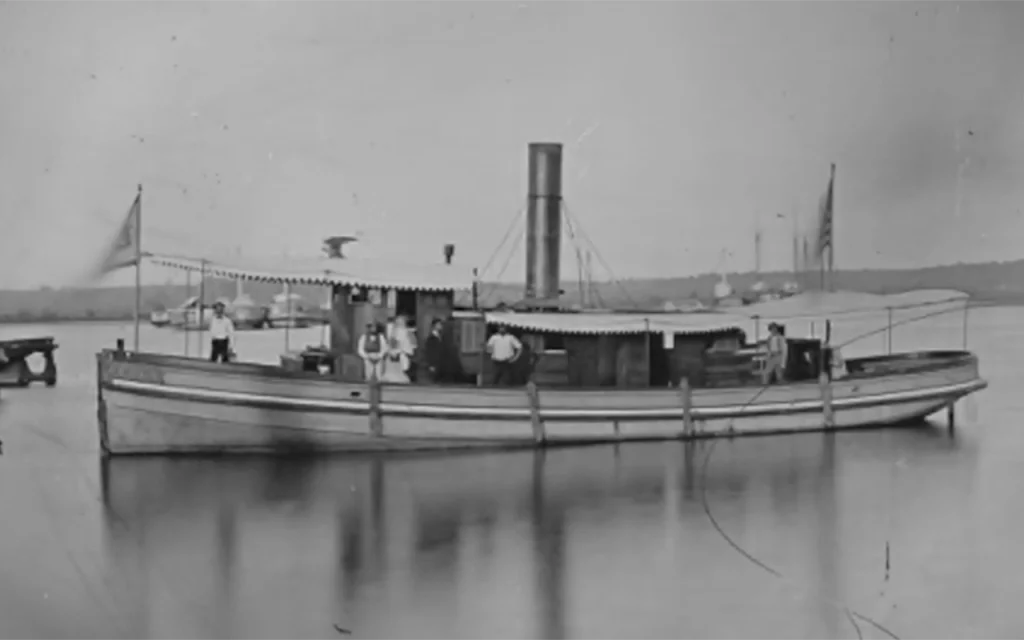
What Historical Features Can Still Be Identified on The USS Narcissus wreck
- Steam Engine: The direct-acting inverted steam engine is a prominent feature, rising four or five feet off the seabed. It is home to various marine life, including sponges, hydroids, and schooling fish.
- Propeller and Shaft: The ship’s propeller and drive shaft are still visible and are significant points of interest for divers. These components are part of the ship’s propulsion system and offer insights into the engineering of the time.
- Pillow Block: This bearing, which once supported the propeller shaft, is located near the engine and is another recognizable feature of the wreck.
- Stern Assembly: The stern assembly stands proud off the seafloor and includes the keel, deadwood, stern post, sheathing, shaft log, shaft, and propeller. This assembly provides a detailed look at the ship’s construction.
- Hull Structure: Portions of the wooden hull, including outer hull planking and wooden pegs (treenails) that fastened the hull to the frames, are often visible underneath the stern assembly. These features help illustrate the shipbuilding techniques of the era.
- Boiler Fragments: Remnants of the boiler, which exploded when the ship sank, can still be seen at the site. These fragments are a stark reminder of the ship’s tragic end.
- Anchor Cables: The cables used by the crew to deploy anchors during the storm are also visible, adding to the historical narrative of the ship’s final moments.
What Safety Measures Are in Place for Divers Visiting the USS Narcissus
- Shallow depth: The wreck is located in only 15 feet of water, which significantly reduces risks associated with deeper dives such as decompression sickness.
- Weather monitoring: Safety is a primary concern, and dive operators reserve the right to cancel or shorten trips due to unfavorable weather or water conditions.
- Guided dives: The Florida Aquarium offers guided dive trips to the site, ensuring that divers are supervised by experienced professionals familiar with the wreck.
- Equipment provision: Complete SCUBA equipment (excluding dive computers) is provided for those who need it, ensuring divers have proper and well-maintained gear.
- Site preservation: Divers are prohibited from disturbing, excavating, or removing artifacts from the wreck site, which helps maintain the integrity and safety of the structure.
- No spearfishing: Spearfishing is not allowed at the site, reducing risks associated with this activity and protecting the marine life.
- Military grave site respect: The site is treated as a military grave, encouraging respectful behavior and cautious exploration.
- Charter boat access: Local dive charter boats are typically used to reach the site, providing a safer means of transportation and site location.
- Legal protection: The wreck is protected by Florida law and the Sunken Military Craft Act of 2005, which helps preserve the site and maintain safe diving conditions.
- No anchoring: To avoid damaging the historic site and potentially creating hazards, divers are instructed not to deploy anchors on the wreck.
Dive Shops That Prove Diving Trips to This Shipwreck
The Florida Aquarium
The Florida Aquarium offers guided dive trips to the USS Narcissus wreck. They provide complete SCUBA equipment (excluding dive computers) and ensure safety through experienced guides and weather monitoring.
Island Boat Adventures
While primarily focused on snorkeling, Island Boat Adventures offers boat tours to Egmont Key, which includes opportunities to explore underwater sites. They provide top-quality snorkel gear and guided tours.
North Florida Wrecks
- USS Oriskany
- USS Massachusetts
- SS Tarpon
- SS Gulf America
- Empire Mica
- USS Chippewa
- Avocet
- Black Bart
- The Vamar
- San Pablo
- USS Narcissus
- The Loftus Wreck
- The Dorothy Louise
- The Mizpah
- MV Janet
- The Eidsvag
- YDT-14 and YDT-15
- USS Strength
- Miss Louise
- The Lulu
- PC-1174
- Three Coal Barges
- USS Accokeek (ATA-181)
- El Dorado
- The Grey Ghost
- The Pete Tide II
- Red Sea Tug

